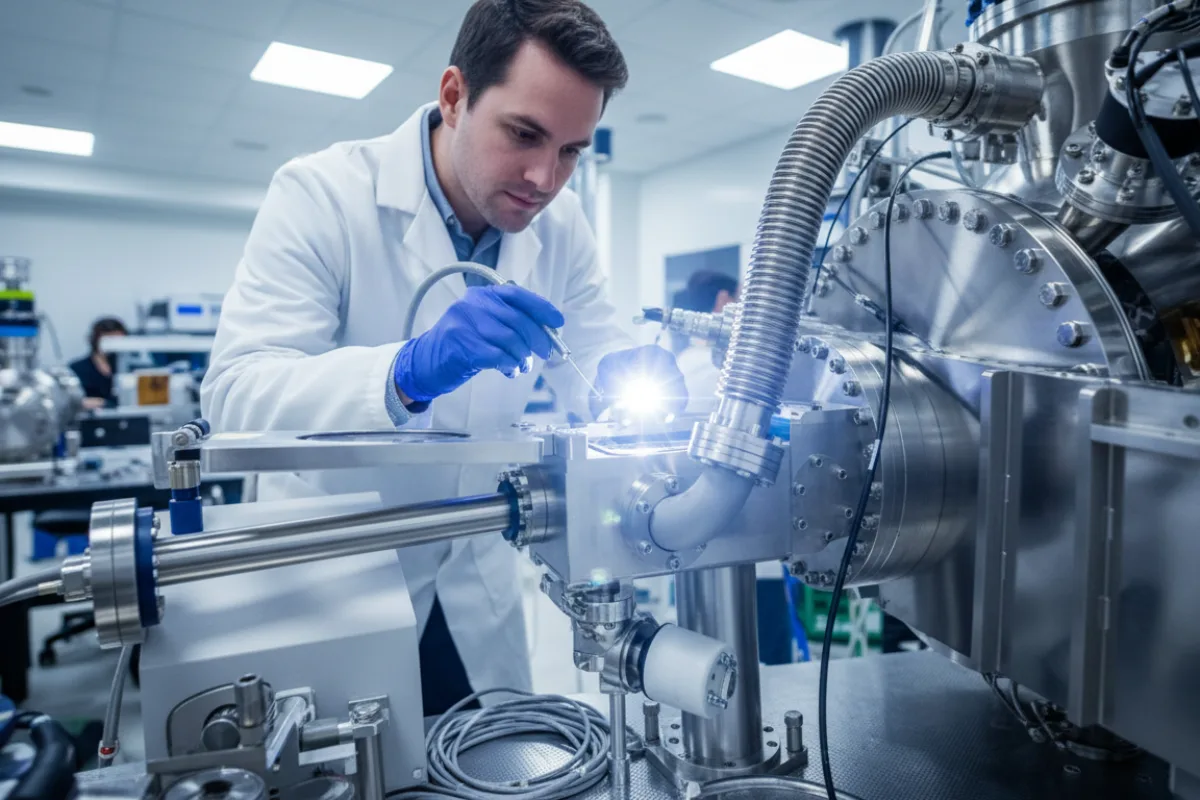Intro
Researchers in Australia and collaborating labs have for the first time linked (entangled) nuclear spins of individual atoms implanted in a silicon chips, a result that moves spin-qubit designs closer to the kind of scalable, industry-friendly quantum processors engineers want.
The team used phosphorus atoms embedded in silicon and a new control scheme to make the atom-scale nuclei “talk” to each other while preserving the quiet, long-lived quantum states that nuclear spins provide.
Why it matters
Nuclear spins are among the most stable qubits in solid-state systems, often retaining coherence for seconds — far longer than many electron-spin or superconducting qubits.
Linking those nuclear spins inside silicon chips suggests a path to building modestly sized quantum registers that could be manufactured with standard semiconductor processes, lowering the engineering barrier to quantum PCs and data-centre systems.
What the experiment achieved, in plain language

The group implanted phosphorus atoms into a silicon wafer and used nearby electrons as intermediaries to mediate interactions between the nuclei. By carefully controlling voltages and microwave pulses, they created correlated quantum states of the two nuclear spins — effectively making the atoms “entangled” across distances inside the chip.
The work demonstrates both high-fidelity control and a control architecture compatible with silicon fabrication techniques. Lead authors note that nuclear spins act like very quiet quantum memories.
In previous labs, those nuclei were isolated and excellent for long-term storage; this result shows they can also be linked reliably without destroying that advantage. That combination—long coherence and controllable coupling—is what many quantum-hardware roadmaps have lacked.
How this helps scale quantum processors
Linking compact nuclear registers on a silicon wafer suggests a modular route: manufacture many identical small units, then connect them with electron shuttles, photon links or classical interconnects.
Recent research in silicon qubits and CMOS compatibility already points to industry pathways for large-scale fabrication — and this milestone removes a significant technical doubt about whether nuclear spins can be made to work together on chip.
Performance, limits and next steps
The team reported robust coherence times and demonstrated gate fidelities sufficient to show proof-of-principle entanglement. But challenges remain: operations are low-temperature and require precise control hardware, and scaling from pairwise links to many hundreds or thousands of qubits will demand error correction and interconnect advances.
Researchers say the next goals are longer chains of linked nuclei, integration with electron-spin processors, and better classical control electronics compatible with standard silicon fabs.
“The spin of an atomic nucleus is the cleanest, most isolated quantum object one can find in the solid state,” said Scientia Professor Andrea Morello of UNSW, describing why nuclear spins are so attractive for long-lived quantum memory. ScienceDaily
What this means for the industry and users

For quantum companies and chipmakers, the result validates investment in silicon-spin approaches that can leverage existing CMOS tools. For enterprises and researchers, it narrows the gap between exotic lab qubits and hardware that could, in time, be produced at scale for quantum accelerators or tightly coupled quantum co-processors.
Analysts caution that practical, fault-tolerant quantum PCs are still years away, but milestones like this one help define realistic engineering paths.
Bottom line
Entangling nuclear spins inside silicon chips is a practical, high-impact milestone: it shows that the quietest solid-state qubits can be made to interact reliably on industry-compatible hardware.
That advance strengthens the case for silicon-based quantum architectures and brings scalable quantum processors one engineering problem closer to solved — though substantial systems-level work remains.
Frequently Asked Questions
What did scientists achieve with nuclear spins in silicon?
They linked (entangled) the nuclear spins of phosphorus atoms implanted in a silicon chip, demonstrating controllable coupling while preserving long coherence times.
Why are nuclear spins important for quantum computing?
Nuclear spins are extremely isolated from noise and can retain quantum information for long times, making them excellent candidates for quantum memory in hybrid architectures.
Does this mean quantum PCs will arrive soon?
Not immediately. The experiment is a key milestone but scaling to fault-tolerant, large-scale quantum processors will require error correction, cryogenics, interconnects and industrial control systems.
How does this relate to silicon chip manufacturing?
Because the work used phosphorus in silicon and control schemes compatible with CMOS-style processing, it suggests existing semiconductor fabrication methods could help scale such qubits.
Where can I read the full research?
The study and related papers are available via the team’s publication (listed on Science/ScienceDaily coverage) and complementary preprints on arXiv for technical details.
Author note: I’m a technology reporter summarizing recent peer-reviewed work and coverage from ScienceDaily, SciTechDaily and related preprints. I used researcher quotes and published papers to avoid overstatement; the milestone is important but does not by itself deliver consumer quantum PCs — it narrows a key hardware gap on the path to scalable quantum processors.


